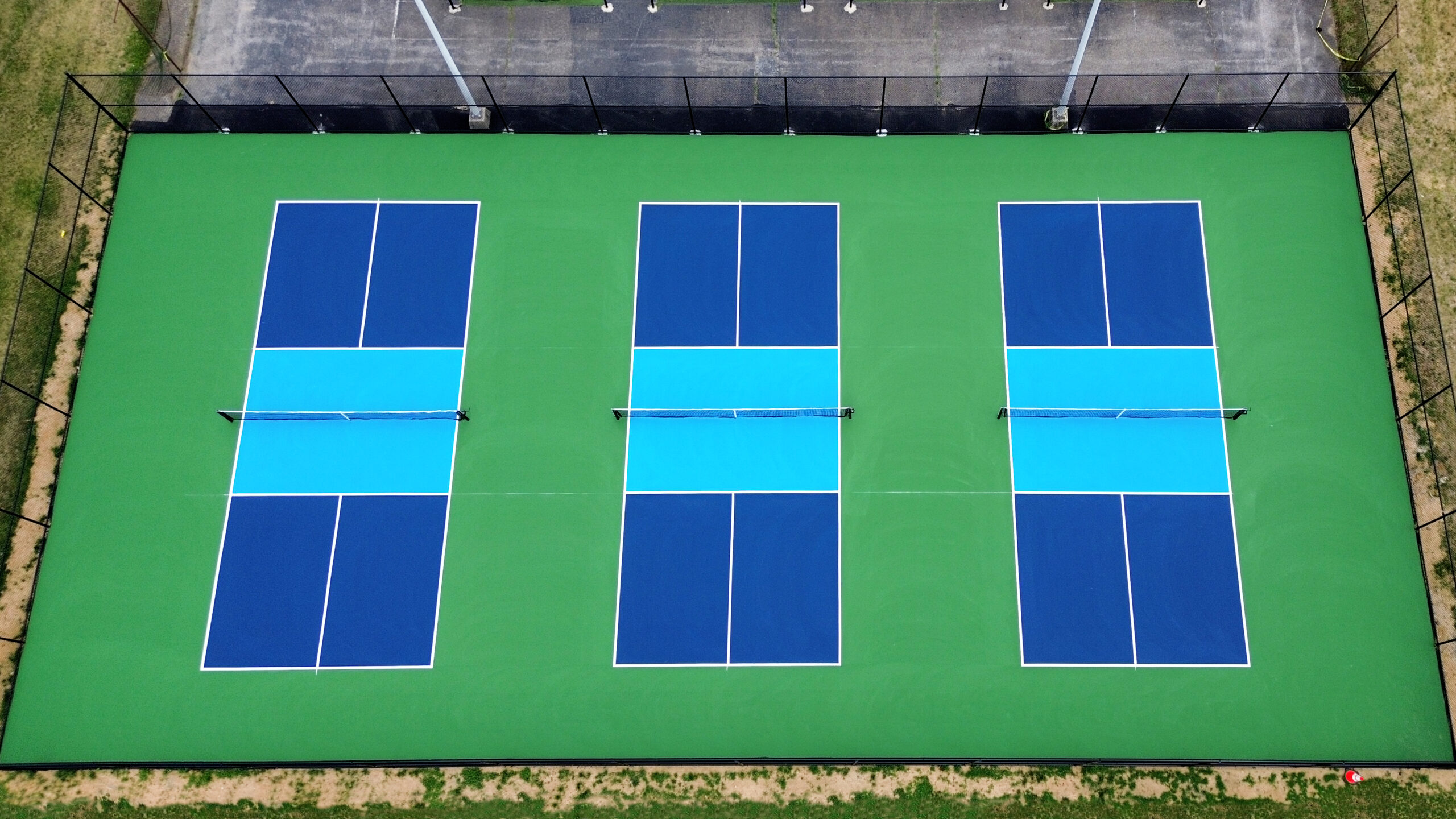High-grade Pickleball Court Construction for each Degree of Play
High-grade Pickleball Court Construction for each Degree of Play
Blog Article
Sustainable Practices in Pickleball Court Building You Must Know
As the popularity of pickleball continues to rise, so too does the requirement for sustainable methods in court construction. This method not only addresses environmental issues however likewise enhances the long life and capability of the courts. From selecting green products to carrying out effective drain and energy-saving lighting solutions, there are countless approaches to take into consideration. Yet, the effect of these methods extends much beyond the court itself. Comprehending exactly how each component adds to a more lasting future invites further expedition into the detailed balance between entertainment growth and ecological stewardship.
Choosing Eco-Friendly Products
Selecting eco-friendly materials is a crucial action in the construction of lasting pickleball courts. The option of sustainable products not only minimizes environmental influence however also enhances the durability and efficiency of the court. Trick products consist of recycled rubber for the surface area, which offers outstanding longevity and shock absorption while diverting waste from land fills.
Additionally, utilizing locally sourced materials decreases transportation discharges and supports regional economies. Pickleball court construction. Using indigenous woods for fence and seating can offer a sustainable aesthetic while ensuring strength against the elements.
Including absorptive materials for court foundations can further contribute to sustainability by enabling all-natural water drain and reducing drainage. These selections not just secure regional ecosystems yet additionally advertise much healthier play atmospheres.
Effective Drainage Solutions
While the option of eco-friendly products is essential, executing efficient drainage solutions is equally vital for preserving sustainable pickleball courts. Appropriate water drainage not only shields the court surface area from water damage yet additionally lessens erosion and overflow, promoting ecological stability.
Reliable drainage systems can include absorptive paving, which enables water to penetrate the ground instead of pooling externally. This minimizes the likelihood of standing water, which can cause mold and mildew and other maintenance concerns. Additionally, incorporating tactically put water drainage networks and swales can route excess water far from the court location, guaranteeing a dry having fun surface area and protecting against dirt disintegration.
Making use of indigenous plants in the landscaping around the courts can even more enhance drainage by soaking up excess water and reducing drainage. These plants need less watering and promote biodiversity, aligning with lasting practices.
Moreover, it is critical to routinely maintain the drain system to ensure its lasting effectiveness. This consists of clearing particles and tracking for blockages. By focusing on efficient water drainage services, pickleball court contractors can considerably add to the sustainability and durability of the center, ultimately benefiting both gamers and the environment.
Energy-Efficient Lights Options
As the demand for pickleball proceeds to expand, integrating energy-efficient lights options into court layout has actually become progressively vital for sustainability. Traditional illumination systems usually consume extreme power, contributing to higher functional prices and ecological effect. Adopting modern-day, energy-efficient technologies is necessary for both new buildings and improvements.
LED (Light Emitting Diode) lighting stands out as a top option due to its durability and energy cost savings (Pickleball court construction). Compared to conventional illumination, LEDs make use of around 75% less power and can last up to 25 times longer, considerably lowering upkeep prices. The directional nature of LED illumination reduces light contamination, ensuring that lighting is focused on the court rather than surrounding areas.

Lasting Surface Alternatives
Discovering lasting surface area choices for pickleball courts has acquired traction among home builders and gamers alike. The focus on green materials not just straightens with the expanding ecological recognition yet additionally boosts the efficiency and durability of the courts.
This product offers excellent shock absorption, lowering the danger of injuries for gamers while promoting sustainability. These tiles are simple to change and set up, and their versatility enables for various court setups.
All-natural turf courts are additionally emerging as a sustainable option, advertising biodiversity and reducing the heat island impact. Nonetheless, they call for normal upkeep and water, navigate here which might not straighten with all sustainability objectives.

Water Preservation Techniques

One more reliable method entails the setup of rainwater harvesting systems. These systems collect and keep rain for use in keeping court surfaces and landscaping. This strategy not only preserves potable water but likewise minimizes dependence on metropolitan resources.
Additionally, employing drought-resistant landscaping around the courts is essential. Native plants need much less water and are better adapted to regional environment problems, hence decreasing overall water consumption. In addition, making use of efficient irrigation systems, such as drip irrigation, guarantees that water is delivered directly to plant roots, reducing evaporation and waste.
Final Thought
Integrating sustainable methods in pickleball court building dramatically adds to ecological preservation and resource efficiency. Making use of green products, carrying out efficient drainage remedies, and taking on energy-efficient illumination options can considerably decrease environmental effect. Furthermore, exploring lasting surface area alternatives and using water conservation techniques boost the general sustainability of these recreational centers - Pickleball court construction. By focusing on these techniques, Web Site the construction of pickleball courts can straighten with broader ecological objectives while promoting durability and capability within communities.
As the appeal of pickleball proceeds to climb, so also does the demand for lasting techniques in court construction.Selecting environment-friendly products is an essential step in the construction of sustainable pickleball courts. By prioritizing energy-efficient lighting options, pickleball court fabricators can contribute to a much more sustainable future while satisfying the needs of stakeholders and players alike.Integrating sustainable surface alternatives not just boosts the performance of pickleball courts but also leads the method for carrying out effective water conservation strategies.Integrating sustainable practices in pickleball court construction dramatically contributes to environmental preservation and official statement source efficiency.
Report this page